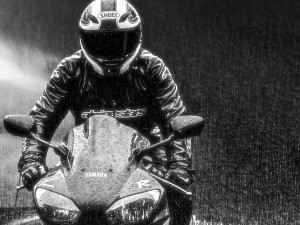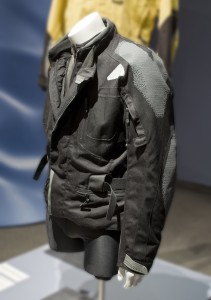Whether you just bought your first bike or are looking to upgrade your equipment, there are many things to consider when choosing a motorcycle jacket. Where will you do most of your riding? Will it be hot? How fast will you be going? Is versatility or style more important? These factors as well as many others are important in determining the perfect jacket to keep you safe and comfortable.
What are my options?
There are two main routes you can take when picking a biking jacket: leather or synthetic. Neither option is necessarily better than the other. The choice comes down to preference and how you are going to use your jacket.
There are some basic things to consider upfront. First, any high-quality motorcycle jacket is not going to be cheap, but it could be worth the investment if it protects your skin from shredding in a skid and your body from life threatening injuries. Your life is a good investment, so choose wisely.
There are many options for increasing safety in both leather and synthetic jackets through body armor and protective materials such as Kevlar and ballistic nylon. However, most motorcyclists agree that leather jackets offer more protection against abrasion than synthetic materials. They will most likely hold up in the event of a crash, unlike a synthetic jacket which will probably need to be replaced.
Though price and protection will likely be the main factors in your choice, there are some other features of leather and synthetic jackets you should consider before making your purchase.
Looking at Leather
Pros
- Can last a lifetime if treated and taken care of properly
- Generally more form fitting, whereas some textile jackets have loose fabric that will flap at high speeds
- Has many body armor options sewn into the jacket, increasing its safety upon impact
Cons
- Not as water resistent—may require special treatment for wet climates
- Less breathable and can be uncomfortable to wear in warm temperatures
- Heavier than a textile jacket which could be less comfortable for long or cross-country bike tours
Considering Synthetic
Pros
- More options for florescent or reflective panels and piping to increase visibility on the road
- Many high-end jackets feature added protection such as Kevlar, ballistic nylon, and Gore-Tex
- Better climate control with insulated lining options for winter and mesh lining for summer
- Can be 100% waterproof
Cons
- Will show dirt and everyday wear faster than a leather jacket.
- Synthetic jacket designs become outdated
- Won’t hold up as well following a crash and may offer less abrasion protection
What We Recommend
These are our recommendations based upon your riding preferences and the features you are looking for in a motorcycle jacket.
| Leather | Ride at high speeds (freeway) | Want something long lasting | Ride mostly during the day | Plan on riding in dry climates | Heat is not a problem |
| Textile | Ride at low/moderate speeds | Okay with having to replace sooner | Want increased visibility for night riding | Want flexibility to ride in all climates | Want something that is ventilated |
Before You Buy
- Check to see if the jacket is “CE approved.” This means that parts of the jacket were tested by a certified facility and met or exceeded safety standards.
- Test your jacket’s fit while sitting down. You want to make sure that it will fit snugly (but not too snugly) when your are sitting on your bike—not just when you are standing up.
When buying a leather jacket make sure the label reads “Full Grain Leather.” Many manufactures try to confuse buyers by advertising their low quality leather jackets as “Top Grain Leather.” This kind of leather is inferior because blemishes in the hide have been sanded away and covered with stamped imitation leather. This means that the leather is weak and will not protect you in the event of a crash or skid. In a full grain leather jacket you should be able to see the natural marking of the leather. A good quality leather jacket should be relatively clear of any blemishes, and the texture should be supple and pliant.
It is also important to get a thick leather for your motorcycle jacket. Thin leather jackets are good for fashion but are useless for protection. The best option for a motorcycle jacket thickness is “heavyweight” because it offers significant protection from impact and abrasion, while also retaining mobility in the arms and torso.
Keep Researching
Check out some of our past articles for more information on picking out the rest of your motorcycle gear:
Images courtesy of driver Photographer via flickr and Wikipedia.


